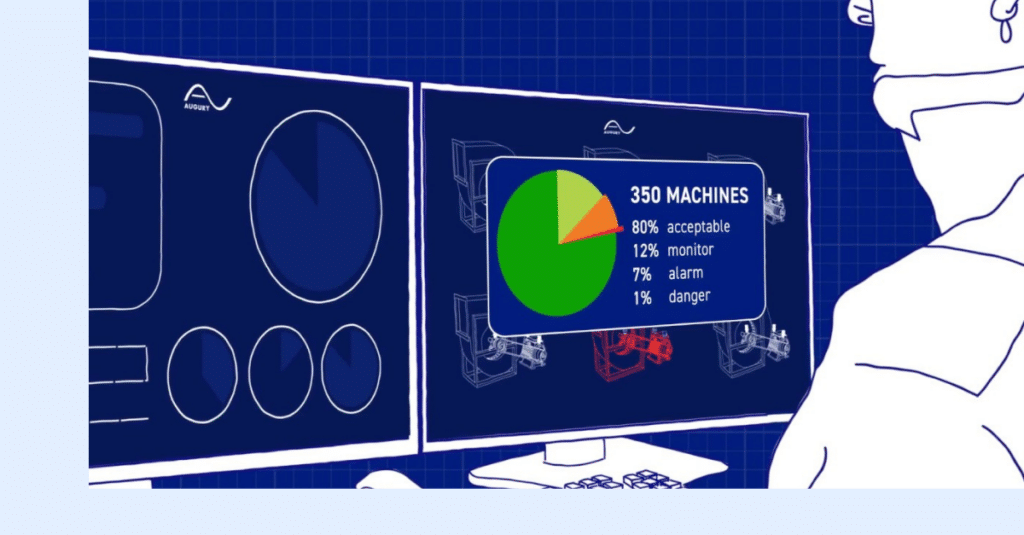
Vibration is everywhere. Whether it’s related to bearings, banjos or bacteria, vibration research continues to inspire a rainbow of use cases… Read all about it in our monthly round-up of manufacturing-related news.
Living In Dizzying Times
‘Future Computers Could Run on Lab-Grown “Brains”’
‘Can AI Generate a Way to Pay for Itself? The AI Hype Is Marketing, Baby’
‘I Saw the Face of God in a Semiconductor Factory’
It’s all rather dizzying. So, for this edition of ‘Manufacturing – The News’, we thought we’d try to bring things back down to Earth.
So, let’s talk vibes!
And indeed, buried behind all the dramatic stories, the gentle art and science of measuring vibrations seems to be enjoying a media moment.
An Avoidable Train Wreck
Apparently, the inability to recognize a worn-out bearing led to the recent toxic train disaster in Ohio, USA.
“If you put an accelerometer on a bearing and you’re monitoring the vibration levels, the minute a defect happens in the bearing, the accelerometer will sense an increase in vibration, and that could be, in many cases, up to 100,000 miles before the bearing actually fails,” according to ‘Hot Box Detectors Didn’t Stop The East Palestine Derailment. Research Shows Another Technology Might Have’. “It would have detected the problem months before this happened. There wouldn’t have been a derailment.”
And there wouldn’t be a headline like this: ‘Health and Environmental Fears Remain After Ohio Derailment and Inferno’.
Driving It Home
Meanwhile, people are using the precision measurement of vibration for everything from catching car problems, to figuring out how toothed whales make their sonar sounds, to listening to plants express stress, to manufacturing the perfect pre-war banjo.
Researchers are now even measuring the vibration of living bacteria to test for drug-resistance. “The measured vibrations are extremely small, at least ten thousand times smaller than the thickness of a hair,” according to ‘SoundCell, Spin-Off Of Graphene Flagship Partner TU Delft, Receives €350,000 From UNIIQ’.
“To accurately measure the vibrations of a single bacterium, SoundCell uses membranes made of graphene – a nanomaterial unique for being the world’s thinnest known material as well as a material that is highly flexible, conductive, and strong. Due to the extremely sensitive properties of graphene and the biological processes in bacteria, SoundCell provides insight into whether a bacterium is still alive (vibrating) after administering an antibiotic.”
Currently, antibiotic resistance is measured by cell division time – which could take days or weeks. Now, this new technology could bring it down to mere hours so doctors would still have time to try other options.
Let It All Synch In…
Vibration may indeed be more than just a passing fad. In a now semi-classic column in Scientific American, it was hypothesized that vibration may actually account for sentience – and more.
“Over the past decade, we have developed a ‘resonance theory of consciousness’ that suggests that resonance – another word for synchronized vibrations – is at the heart of not only human consciousness but of physical reality more generally,” according to ‘The Hippies Were Right: It’s All about Vibrations, Man!’.
But yes, more research is required in this area. So meanwhile, let’s really stick to more Earthly matters…
Learn more how Augury’s AI-driven vibration analysis boosts efficiency and eliminates downtime for manufacturers.
Or read: ‘Manufacturing – The News: Why Can’t People And Robots Just Get Along?’.






